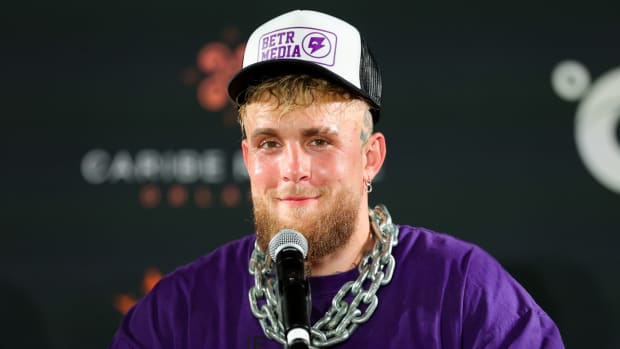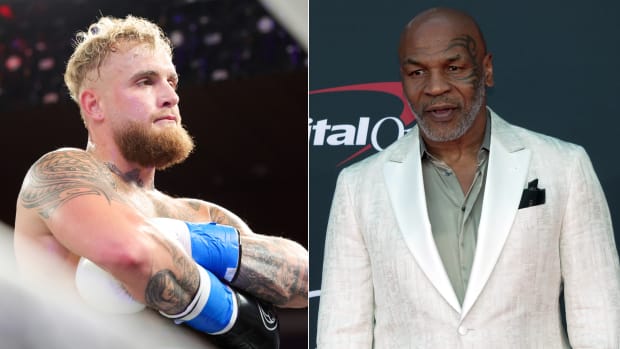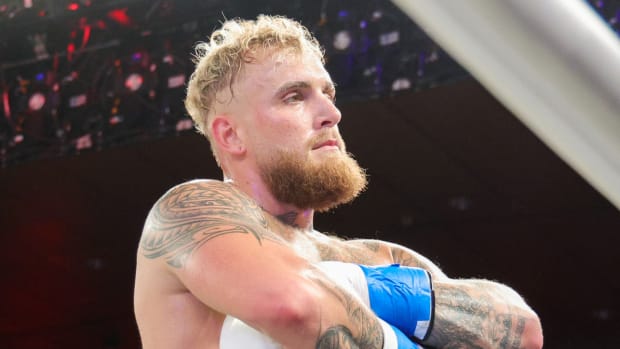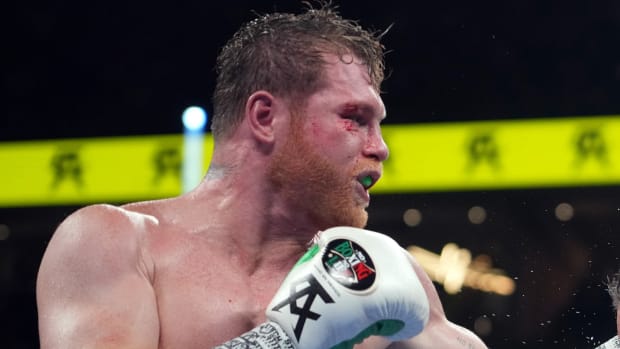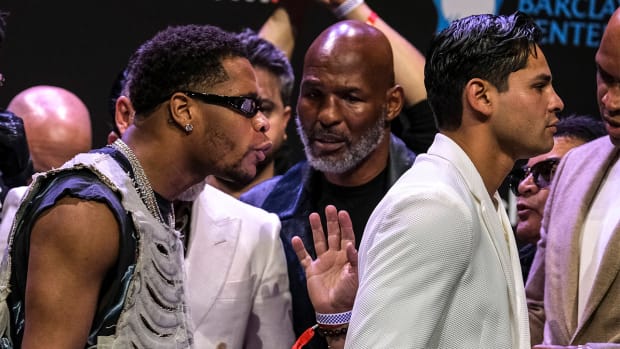His Potential Soaring, How High Can Jaime Munguia Actually Climb?
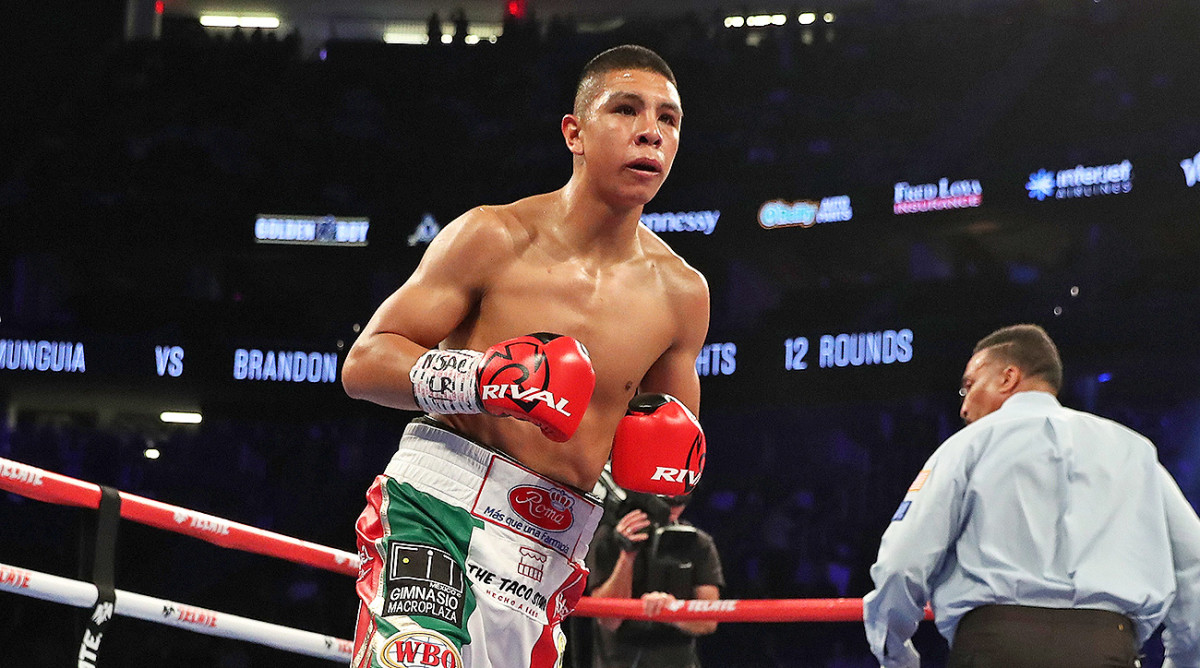
MONTERREY, Mexico — If you’re looking for the next big thing in boxing, look no further than Jaime Munguia. He’s a big, sturdy junior middleweight with an 81% knockout rate and a piece of the 154-pound title around his waist. Another fight or two, and he is headed north to conquer the middleweight division.
Or …
If you’re looking for the next flash in the pan, the next one-hit wonder, look no further than Jaime Munguia. He won his version of the title last May, pummeling Sadam Ali, a natural welterweight, into submission. He outpointed Liam Smith (meh), eviscerated Brandon Cook (bleh) and in his last fight won a lopsided decision over Takeshi Inoue.
Here’s the point: A year into Munguia’s arrival on boxing’s big stage, it’s unclear exactly what he’s capable of—if anything at all.
Fernando Beltran thinks he is. Beltran—the CEO of Zanfer Promotions, who has a history of mining top Mexican prospects—first spotted Munguia when he was seven, fighting on the streets of Tijuana. He first saw Munguia as a future star when he was 12 and mopping the mat with kids in the amateur ranks. When Munguia started barreling through low-level competition as a pro, Beltran began calling up the major U.S. promoters, pleading with them to give Munguia a shot.
Golden Boy was one of them. In 2017, Golden Boy’s president, Eric Gomez, began getting phone calls from Zanfer officials. Give us a chance. We’ll fight anybody. Give us a shot at fighting in the U.S. They sent Gomez footage of Munguia. Gomez wasn’t impressed. “He was a typical Mexican fighter, aggressive, threw a lot of punches. I didn’t see anything special. He was just very, very strong," said Gomez.
Tom Loeffler got those calls, too. Last April, Loeffler, Gennady Golovkin’s promoter, was in a bind. Saul Alvarez had tested positive for a banned substance, and Golovkin needed a new opponent. Two months earlier, Loeffler had worked with Zanfer on another show. He remembered them discussing Munguia. He remembered them begging for a shot. Loeffler was ready to give it to them—until the Nevada commission rejected Munguia, citing his thin résumé.
“It was Cinco de Mayo, and here was a Mexican middleweight who was physically bigger than Gennady,” said Loeffler. “It seemed like he fit the bill. I thought he had a bright future, but he has really taken off.”
Added Oscar De La Hoya, “The best thing that could have happened to Munguia’s career is not fighting Golovkin.”
The Ali fight was a similar situation. Weeks before Ali’s scheduled title defense, Liam Smith withdrew. Golden Boy was scrambling. Zanfer called—Munguia was available. Ali’s team accepted—and watched Ali get knocked down three times in a four-round wipeout.
Watching from ringside, Gomez saw that same raw power. But he saw something else, skill he had not seen before.
“He got better,” Gomez said. “I’m telling you, we studied two or three fights of his. That wasn’t the same Munguia. When I saw him on his toes boxing, jabbing, throwing a lead hook, that impressed me. I thought, ‘s---, this kid can actually box.’ It was an impressive win.”
The question now—how much better can he be? At 22, Munguia is one of boxing’s youngest titleholders. There is enormous room for growth. And for those watching him, there are obvious areas he needs to address.
“They’re fixable,” says De La Hoya. “He sometimes keeps his head a little too high. Robert Alcazar, my old trainer, is teaching him how to stay on his toes, move his waist a little more. So he is learning.”
Added Gomez, “With his size and his reach, that jab should be automatic. Go down to the body, double and triple. And with his defense, a little more head movement.”
Munguia agrees. At a press conference to promote Saturday night’s title defense against Dennis Hogan (DAZN), Munguia appeared relaxed. He has built out his team, adding a strength and conditioning coach and a dietician. After struggling mightily to make weight against Inoue, he is making 154-pounds easier. He is a warrior, in the mold of Antonio Margarito, who once trained at the same gym in Tijuana, but he’s determined to become a more complete fighter.
“The first thing we fixed, before anything, was the weight,” Munguia told SI.com. “To take better care of ourselves, to arrive in better shape, for better performance. I think that’s what affected me a lot in the last fight, the weight. Also defense and more speed, velocity. But I think all of that goes hand in hand with the weight.”
“Being champion. I need to prepare better now because everyone wants to beat me. I trust in my abilities, in my strengths so I’m happy with what we’ve achieved. And keep moving forward. That’s what I think has changed the most, my mentality.”
Everyone in Munguia’s camp agrees—he needs better competition. When—and at what weight class—seems to be up for discussion. De La Hoya would prefer Munguia remain at junior middleweight for “multiple fights” and attempt to unify the titles. Boxing politics would make that difficult—Jarrett Hurd and Tony Harrison, the division’s other titleholders, fight for Golden Boy rival Al Haymon—but De La Hoya believes it’s possible.
Beltran and Gomez see Munguia’s time at 154 being limited. Gomez believes he is ready for a big fight at 160-pounds. Beltran has told Gomez that “If a Golovkin or Canelo fight is available, say yes—we’ll figure out the money later.” Gomez says he has seen enough out of Munguia to believe that he would beat Golovkin, if given the chance.
“He’s ready,” Gomez said. “Golovkin’s a little older. Munguia has a little more experience. No disrespect—Golovkin has a style that’s beatable. If you move a little bit on him, he’s beatable. And the stuff I’m seeing in the gym, I believe Munguia is ready.”
For a young fighter, Munguia has checked a lot of boxes. He’s a world champion, and a popular one. On Saturday, he will headline at Arena Monterrey, a 17,600-seat venue. He has savage power and a television friendly style.
He’s a star in the making.
The question is, will better competition cause that star to burn out?

